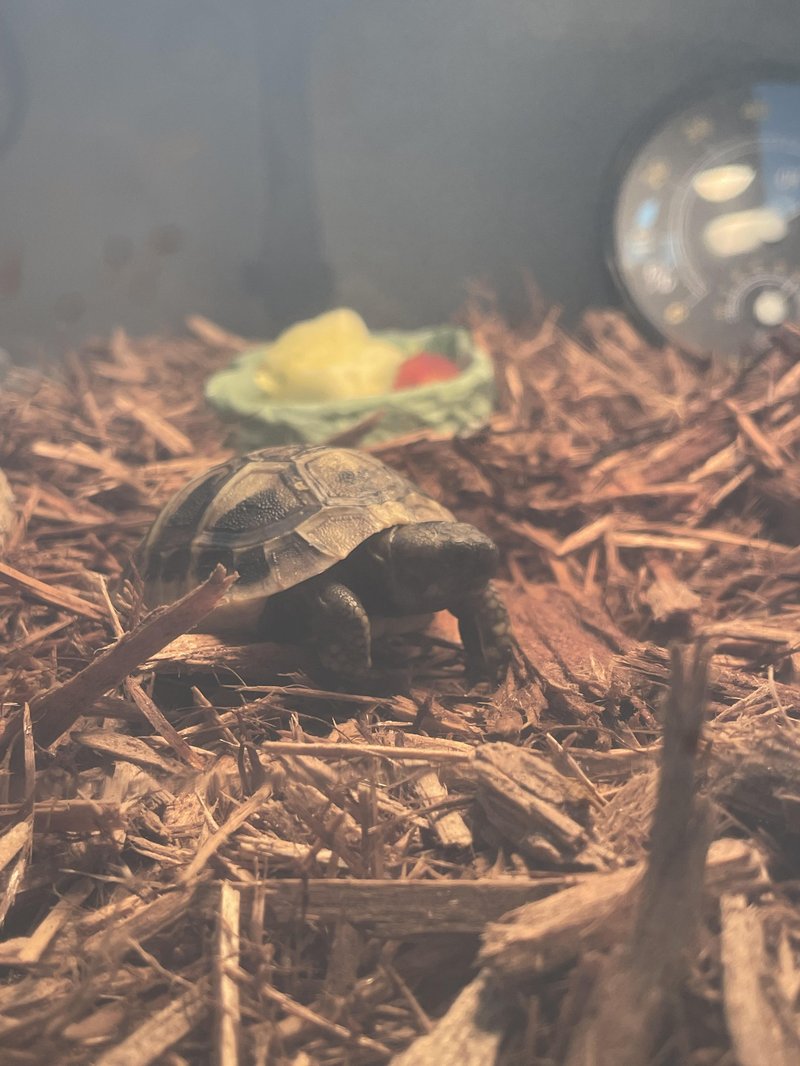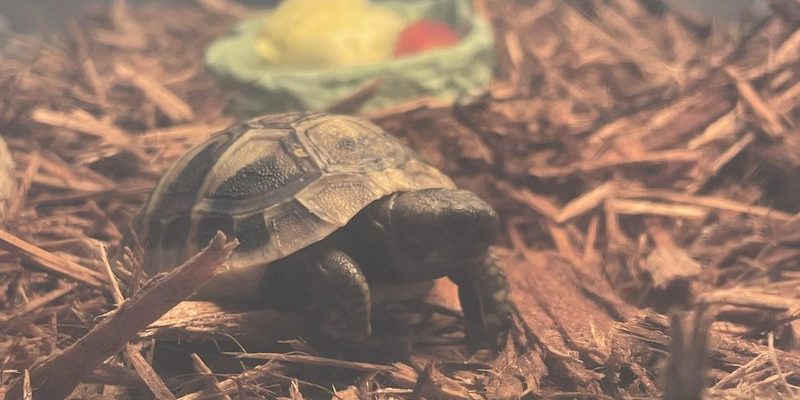
Hermann’s tortoises are charming little creatures that come from a warm, sunny Mediterranean habitat. They love to bask in the sun and roam around, enjoying the right temperatures and moisture levels. So, if you’re considering bringing one home or you already have one, understanding their needs is essential for their well-being. Let’s dive into the specifics of how to create the perfect environment for your shelled friend.
Understanding the Ideal Temperature Range
Getting the temperature right is crucial for your Hermann’s tortoise. They thrive best in a temperature range of 70°F to 90°F (21°C to 32°C). But let’s break that down a bit more. Just like you enjoy a warm room when it’s cold outside, your tortoise needs a warm spot to bask and absorb heat.
1. Basking Spot: This is the area where your tortoise will soak up the warmth, kind of like how you might sunbathe on a beach. The basking area should be around 90°F to 95°F (32°C to 35°C). You can create this spot using heat lamps or ceramic heaters. It’s important to monitor this area carefully to ensure it doesn’t get too hot.
2. Cool Area: Just like you don’t want to stay in the sun all day, Hermann’s tortoises need a cooler area to retreat to. This should be around 70°F to 80°F (21°C to 27°C). Providing a gradient of temperatures allows your tortoise to move to an area where they feel most comfortable.
3. Nighttime Temperature: At night, the temperature can drop a bit, which is natural. Aim for about 65°F to 75°F (18°C to 24°C) during the night. Just like us, they need that little cool-down period to help them rest.
Setting Up the Humidity Levels
Humidity is another vital aspect of your tortoise’s environment. Hermann’s tortoises are used to areas with a bit of moisture, so getting the humidity just right can be a balancing act. Generally, a humidity level between 40% to 60% is ideal.
1. Why Humidity Matters: Humidity plays a big role in your tortoise’s health. Too low, and they might experience dehydration, which can lead to health issues. Too high, and it can encourage mold or bacteria growth, which isn’t good either.
2. How to Measure Humidity: A simple way to monitor humidity is by using a hygrometer. These handy devices can give you a real-time reading of your enclosure’s humidity levels. It’s like checking the weather before you go outside—important for planning!
3. Increasing Humidity: If you notice the humidity level dipping too low, you can boost it by misting the enclosure with water or adding a small water dish. Just remember not to overdo it; creating a swamp isn’t the goal!
Choosing the Right Enclosure
The type of enclosure you choose can significantly impact both temperature and humidity. A well-constructed habitat will keep your tortoise safe and comfortable.
1. Type of Enclosure: Many tortoise owners opt for glass terrariums or wooden enclosures. Glass allows for good visibility, while wood provides insulation and can hold warmth better. Whatever you choose, make sure it’s safe and spacious.
2. Size Matters: Hermann’s tortoises need space to roam. A larger enclosure helps maintain better temperature gradients and humidity levels. A good rule of thumb is at least 4 feet long for an adult tortoise.
3. Heating and Lighting: Make sure to include a UVB light in your enclosure, as this mimics sunlight and helps your tortoise synthesize vitamin D3, crucial for their health. Combining this with heating lamps will help create the necessary temperature zones.
Monitoring and Adjusting Conditions
Keeping an eye on the environmental conditions of your tortoise’s habitat is essential. This isn’t a “set it and forget it” situation; it requires regular checks and adjustments.
1. Daily Checks: Take a few moments each day to check the temperature and humidity. This is like doing a quick inventory to ensure everything is as it should be.
2. Making Adjustments: If the temperature is too high, you might need to reposition your heat sources or add more ventilation. If humidity is off, think about adjusting your misting schedule or adding more water sources.
3. Be Observant: Pay attention to your tortoise’s behavior too. If they’re hiding often or not basking, it could indicate that something’s off with the temperature or humidity.
Seasonal Changes and Their Impact
Just like we adjust our wardrobes based on the season, you’ll need to adapt your care routine for your tortoise as seasons change.
1. Summer vs. Winter: In the summer, you might need to manage higher temperatures and humidity, while winter may require additional heating to ensure your tortoise doesn’t get too cold.
2. Adjusting Light Cycles: As the days get shorter in winter, you may also want to adjust the light cycle in their enclosure. Providing about 12-14 hours of light can simulate the longer days of summer.
3. Holiday Travel: If you plan to travel during seasonal holidays, ensure someone can keep an eye on the temperature and humidity. It’s like leaving a trusted friend in charge of your café while you’re away.
Common Issues and How to Troubleshoot
While most owners can create a comfortable environment, problems can still pop up. Here are a few common issues and how to fix them.
1. Humidity Problems: If you notice your tortoise has dry skin or isn’t drinking enough, it might be a sign of low humidity. You could try adding more water containers or adjusting your misting routine.
2. Temperature Fluctuations: If the temperature seems to fluctuate a lot, check your heat sources. Sometimes, heat bulbs can burn out or malfunction. Having a backup can save you a lot of trouble!
3. Signs of Stress: If your tortoise isn’t feeding well or seems lethargic, stress from the environment could be the cause. Review both temperature and humidity; something might be off balance.
Creating the right temperature and humidity environment for your Hermann’s tortoise is like crafting a tailored suit—everything must fit just right. By understanding their specific needs and keeping a close eye on their habitat, you can help your tortoise feel comfortable and thrive.
Remember, a happy tortoise often leads to a happy owner. With the right care, you’ll not only enjoy your tortoise’s delightful personality but also contribute to their long and healthy life. So let’s raise a warm cup of coffee (or tortoise food) to your new adventure in caring for these beautiful creatures!

